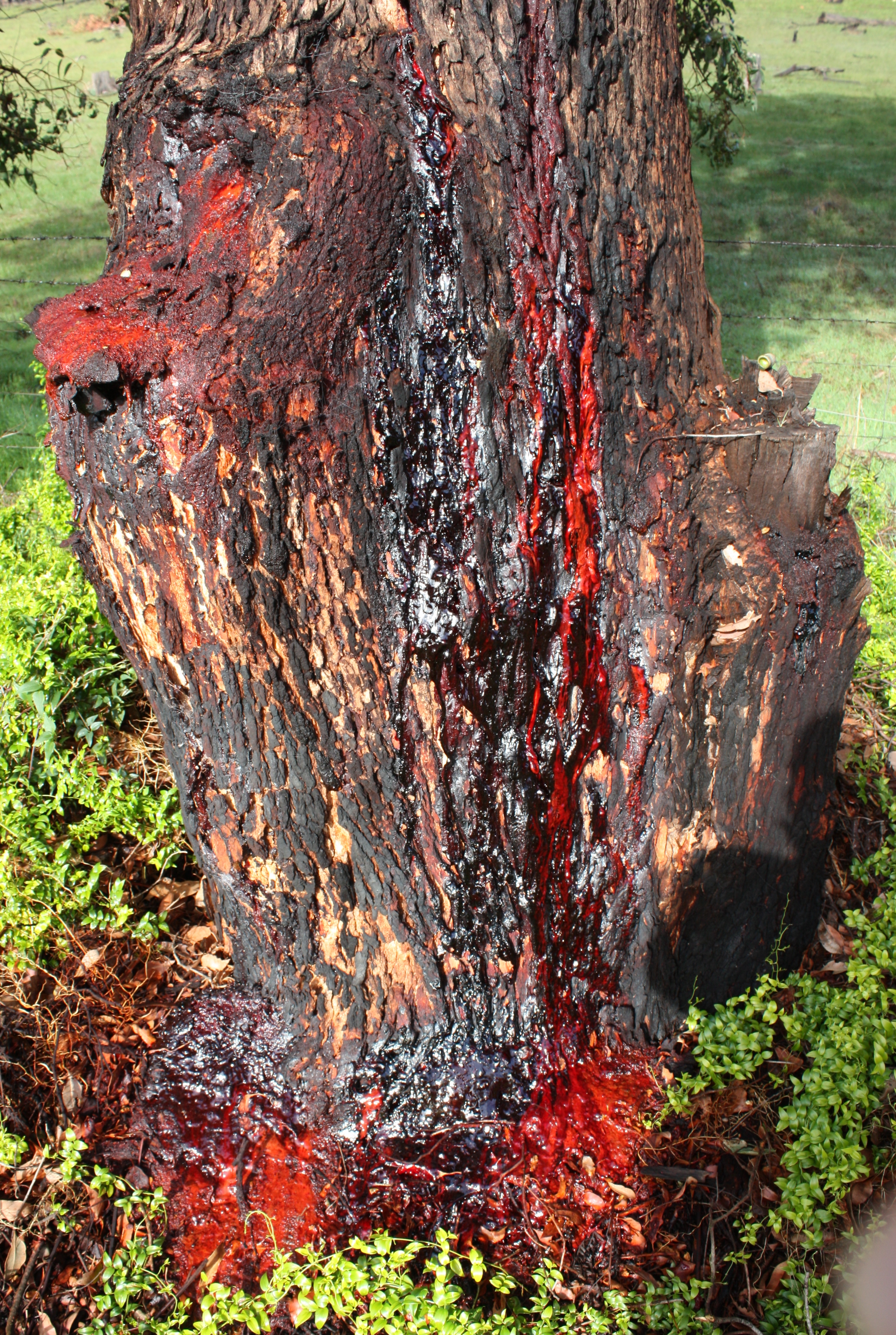Kino (botany) on:
[Wikipedia]
[Google]
[Amazon]

 Kino is a botanical gum produced by various trees and other plants, particularly bloodwood species of
Kino is a botanical gum produced by various trees and other plants, particularly bloodwood species of

 Kino is a botanical gum produced by various trees and other plants, particularly bloodwood species of
Kino is a botanical gum produced by various trees and other plants, particularly bloodwood species of eucalypt
Eucalypt is a descriptive name for woody plants with capsule fruiting bodies belonging to seven closely related genera (of the tribe Eucalypteae) found across Australasia:
''Eucalyptus'', ''Corymbia'', ''Angophora'', '' Stockwellia'', ''Allosyn ...
s (''Angophora
''Angophora'' is a genus of nine species of trees and shrubs in the myrtle family, Myrtaceae. Endemic to eastern Australia, they differ from other eucalypts in having juvenile and adult leaves arranged in opposite pairs, sepals reduced to projec ...
'', ''Corymbia
''Corymbia'', commonly known as bloodwoods, is a genus of about one hundred species of tree that, along with ''Eucalyptus'', ''Angophora'' and several smaller groups, are referred to as eucalypts. Until 1990, corymbias were included in the gen ...
'', ''Eucalyptus
''Eucalyptus'' () is a genus of over seven hundred species of flowering trees, shrubs or mallees in the myrtle family, Myrtaceae. Along with several other genera in the tribe Eucalypteae, including '' Corymbia'', they are commonly known as ...
'') and ''Pterocarpus
''Pterocarpus'' is a pantropical genus of trees in the family Fabaceae. It belongs to the subfamily Faboideae, and was recently assigned to the informal monophyletic ''Pterocarpus'' clade within the Dalbergieae. Most species of ''Pterocarp ...
'', in reaction to mechanical damage, and which can be tapped by incisions made in the trunk or stalk. Many ''Eucalyptus'', ''Angophora'' and ''Corymbia'' species are commonly referred to as 'bloodwoods', as the kino usually oozes out a very dark red colour. Kino flow in angiosperms contrasts with resin flow in conifers
Conifers are a group of cone-bearing seed plants, a subset of gymnosperms. Scientifically, they make up the division Pinophyta (), also known as Coniferophyta () or Coniferae. The division contains a single extant class, Pinopsida. All ext ...
. The word ''kino'' is of Indian origin. In Australia, "red gum" is a term for kino from bloodwood trees and red acaroid resin
{{Short pages monitor